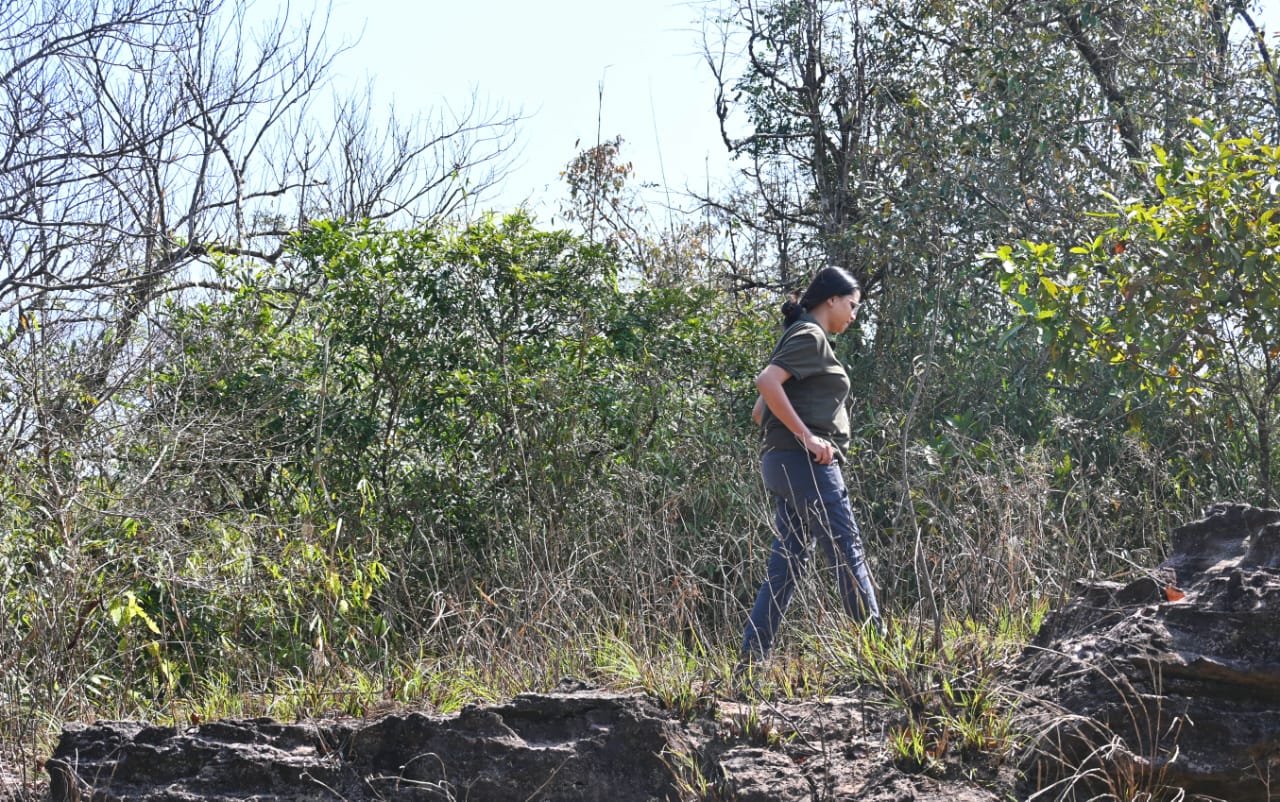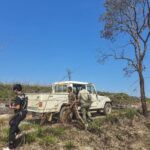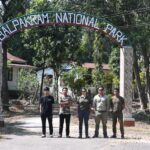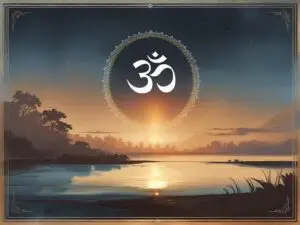I always keep wondering how some people in mainland India could, even at this hour, have no clue about the existence of Northeast India. Many times, people struggled to try to figure out my peculiar (for them) facial features and sometimes even asked me for that extra ticket entry fee (meant for foreigners) at tourist sites. I could never stop wondering how come we (being the peculiar) are informed of Panaji to be the capital of Goa, and that Tamil Nadu, Kerala, Karnataka, Andhra Pradesh, and Telangana are different South Indian States.
Forget about the cultural and historical recognition, North-East India is one of the lesser talked about and known geographical regions of India even after being an Indo-Burma biodiversity hotspot. If closely observed, this region holds a plethora of geographical, historical, and cultural heterogeneity since time immemorial. This probably could be one of the reasons this region manifests a lot of enigmatic stories and folklore, yet locked in incognito and needs ears to listen, eyes to see, minds to perceive and hands that write, the untold.
Meghalaya is one of the eight states of Northeast India comprising three primary hill ranges- Khasi Hills with the highest elevation (1700m) at the centre, the eastern part of the state the Jaintia Hills and the Garo Hills in its western part. Garo Hills have Goalpara district of Assam to the north, shares an international boundary with Bangladesh to the south, Khasi Hills, Meghalaya and Kamrup, Assam to the east, and Goalpara district, Assam, and Bangladesh to the west.
This makes the terrain of Garo hills very diverse with stretches of valleys and highland plateaus in some parts, rich deposits of coal and limestone in other parts, and deep canyons, waterfalls, and rivers in several parts. In comparison to the recent sprawling tourism in the Khasi and the Jaintia hills from all over the country and beyond, Garo Hills have long been one of the neglected parts of the state of Meghalaya, mostly in terms of recognizing the natural and cultural significance that these hills otherwise have in abundance.
It was one windy morning, waking up to see the sky above my head ablaze red with Ximolu (Bombax ceiba), while the cries of Hoolock gibbons soothed my ears. I could not ponder longer on the beautiful thoughts when I saw James Marak, one of the Forest guards of BNP, waiting for quite some time to guide our team to go inside Balpakram National Park (BNP). The mystical Garo Hills in its southern part have the Balpakram National Park, the only National Park of its kind in the world where the entire area of the existing park was initially under the jurisdiction of the local community and the Nokma (Village head), which later was acquired by the Government through outright purchased in 1986.
BNP has an area of 352 sq km that extends up to the international boundary of Bangladesh in the South, towards its East flows one of the longest and most serene rivers of the state, the Simsang River, while towards the West, BNP connects the West Khasi hills. Balpakram represents a remnant of an ancient plateau of the Pre-Cambrian peninsular shield with Chitmang Peak (1023m) as the highest point in the area.
As we were driving off-road in the interiors of BNP, we could see a myriad of changes in the landscape. The dense forest, in the blink of an eye, had caves and big rocks. Already stimulated by what we could see, James started narrating engrossing stories about the origin of Balpakram. Balpakram got its name from the Garo dialect of two words “Balwa” which means “wind” and “Pakram” meaning “which blows constantly”, hence Balpakram is the “land of the perpetual wind”. Balpakram is considered a sacred place by the Garo tribe of Meghalaya and has deeply rooted indigenous beliefs and myths associated with the plateau.
According to local myths, the spirits of the dead of the Garo tribe first visit the Balpakram plateau, and that is where it is decided whether the spirit would finally voyage to heaven or hell. So, it is considered the “sanctuary of the souls” or “the land of the spirits”. Garos also believe that one must visit Balpakram at least once in their life to be reincarnated as a human. Balpakram offers many sacred sites and natural formations that have several emotional and cultural connotations with the tribal ancestry of the Garo tribe.
There are mythological places like Gandhi Soram which consists of three hillocks marking the funeral site of their tribal ancestors, Mebit (the Oracle rock) which contains pebbles that foretells the direction where jhum fields must be opened, Balpakram Gorge is considered as the resting place of spirits of the dead, Chidimak is the bathing place of the spirits, Me. mang Anti-Charam is the market place of the spirits, Dikini ring is an upside down boat and many more. There are a few sites that have several ecological implications such as So.gin Sa.ram which is the nesting place of vultures, Matcha melaram which is the meeting place of tigers and Deoban which is the fishing place of deities.
The Hindu names of the rivers, areas, and peaks in Balpakram such as Kailash peak (Peak of Mahadev) which is regarded as the dwelling place of the great deity, places such as Mahadeo, Hatisia, Moheshkola, Kanai etc. are evidence that shows the once flourishing Hindu practices in the Garo hills. Garos believe that it is the area from where the Hindu God Hanuman collected Sanjivanee, the herb that could heal the wounds of Rama during the fight with Ravana as mentioned in the Hindu epic, Ramayana. Not just Sanjivanee, Balpakram is believed to have many other magical plants like Dikge that do not grow elsewhere.
The landscape is extremely unique with patches of moist deciduous forests, and dense tropical forests surrounded by giant rocks that at times take the form of a long narrow chain of caves that remains globally unexplored and unmapped. The dynamic landscape offers a multitude of fauna with 49 different species of mammals which includes 5 species of civets, 5 species of cats, 4 species of ungulates, 7 species of primates, the largest home for wild Asian elephants, 349 species of butterflies, 448 species of moths, 45 species of reptiles, 26 species of amphibian, home to rare bird species such as Jerdon’s Baza, Mountain Bamboo Partridge, Kalij Pheasant, Grey Peacock Pheasant, Eye Browed Wren Babbler, Great Hornbill etc. and several florae such as varieties of orchids including the Lady’s Slipper orchid, which is the State plant of Meghalaya etc. Balpakram also has the rarely grown insectivorous Pitcher Plant.
It was already late afternoon when we completed our recce in Balpakram. As we were driving back to our field station in Hatisia, I had a train of thoughts, mostly hazy. Balpakram still remains to be one of the virgin patches of natural forests in the country with probably the least human footprints on its land, but undoubtedly innumerable footprints of rare species of wildlife, many yet untraced. Balpakram, even today is an enigma, that lingers the long-standing tribal myths and beliefs, which if given attention would definitely unfold many traditional ecological knowledge and practices of the communities that might to a large extent help conservation efforts. The constantly blowing wind, the blooming orchids, the pug marks of small cats, the chains of dark caves and the lush green peaks of Balpakram have much more to tell, of stories unheard, of wilderness unknown, of souls’ unseen.
Anushka Saikia
Wildlife Biologist, Elephant Research and Conservation Division, Aaranyak, Beltola, Guwahati.
Email id: anushkasaikia5@gmail.com






